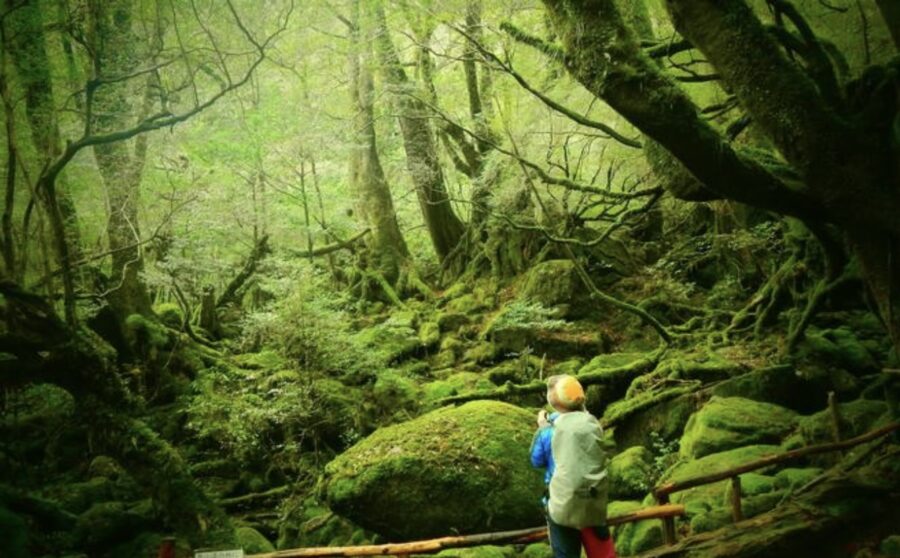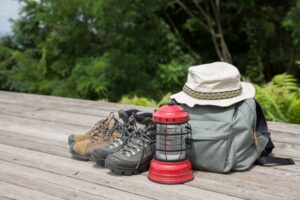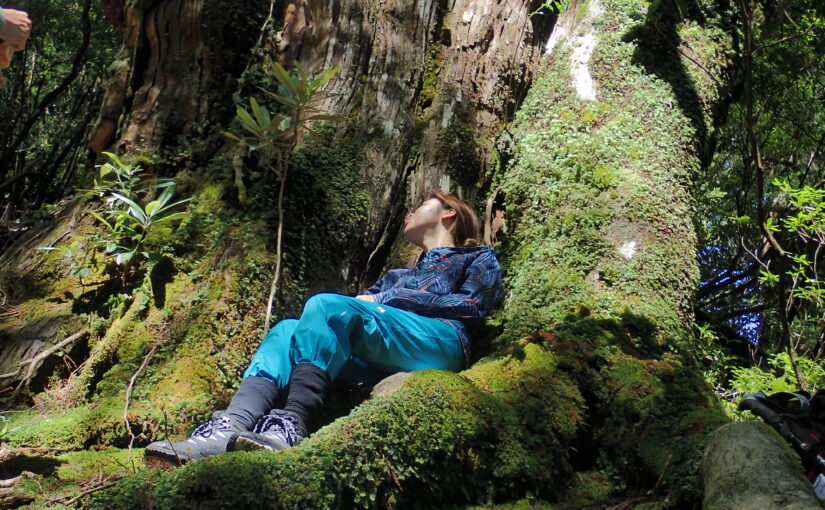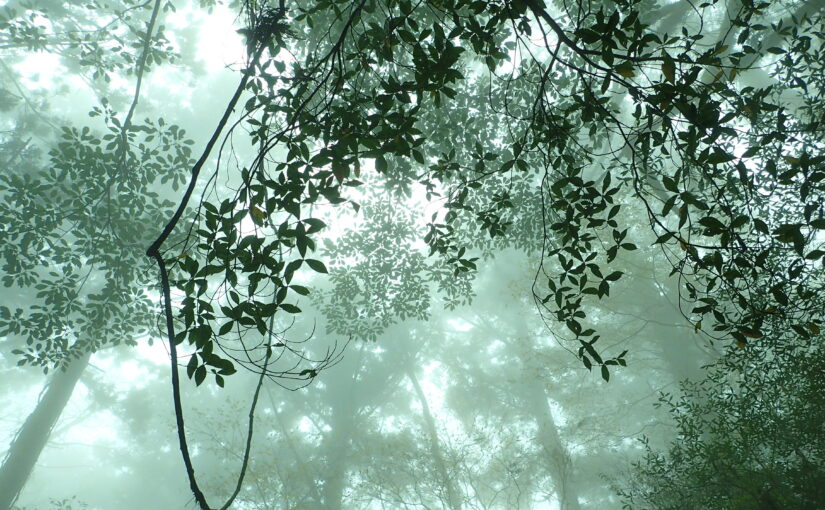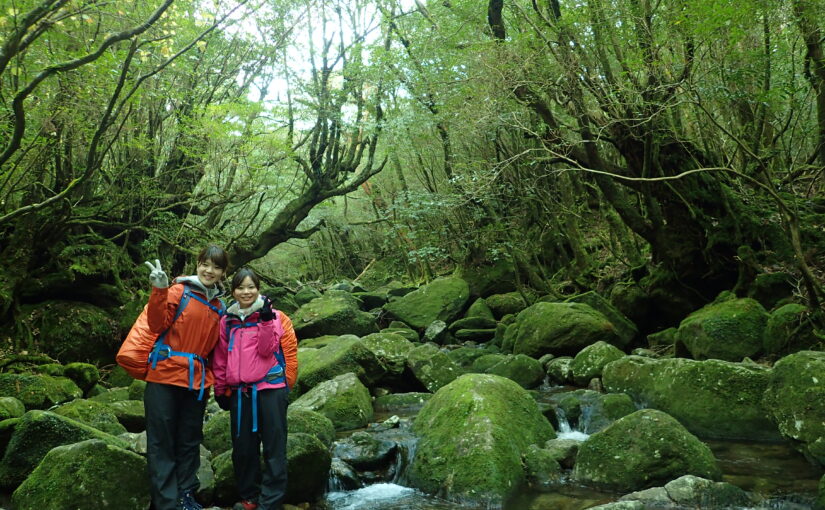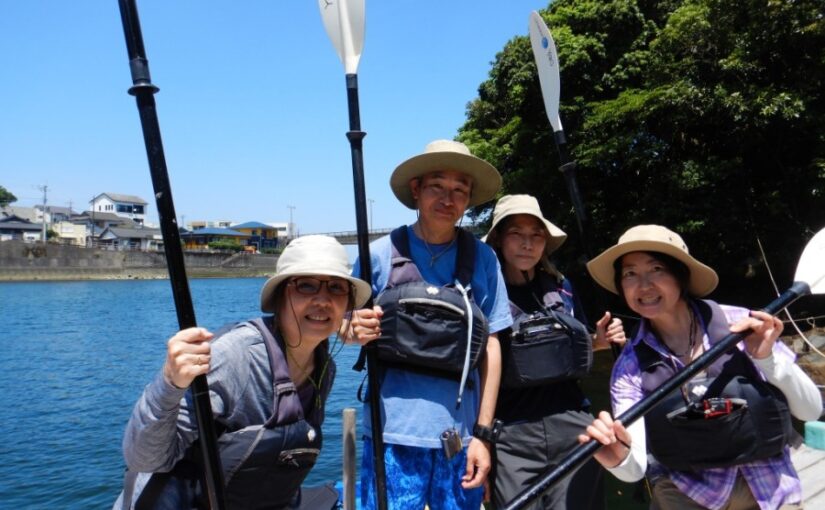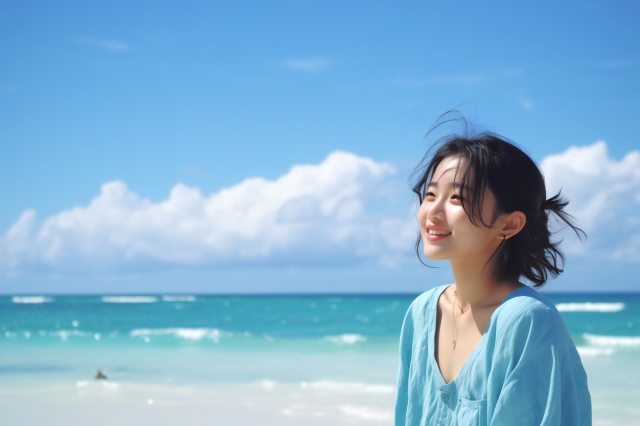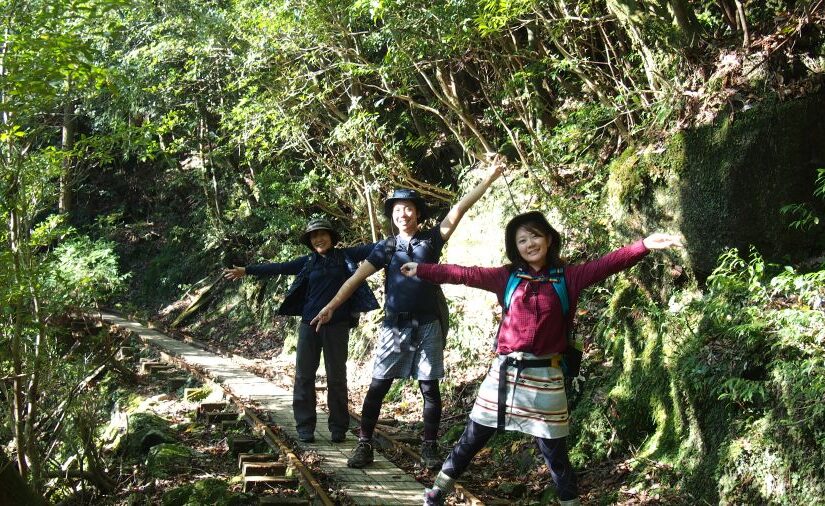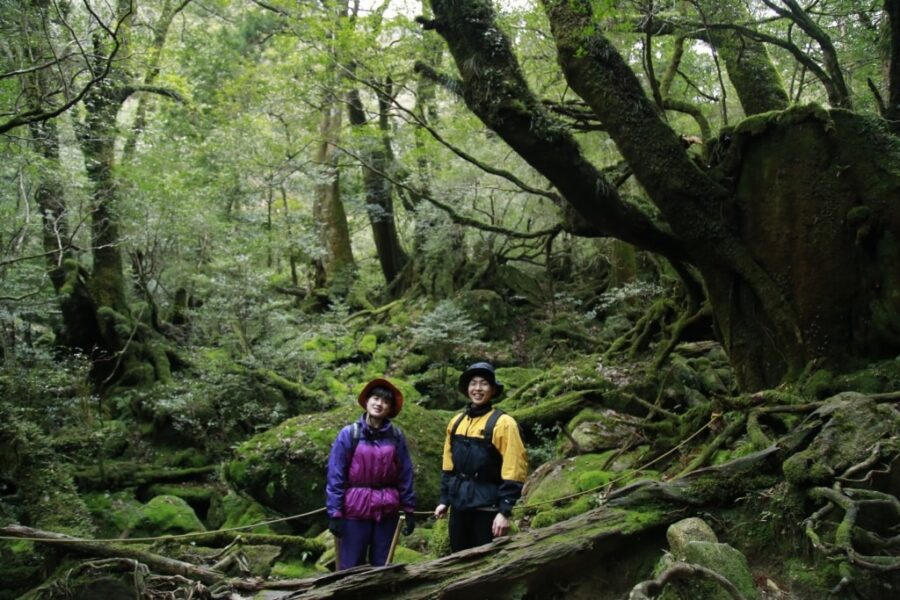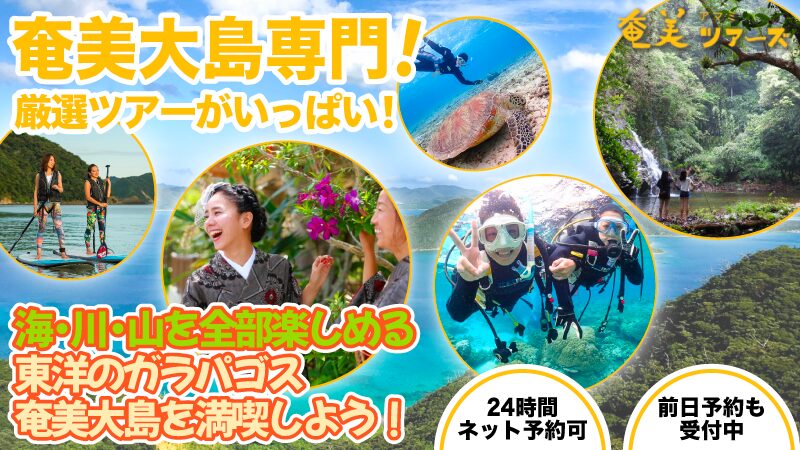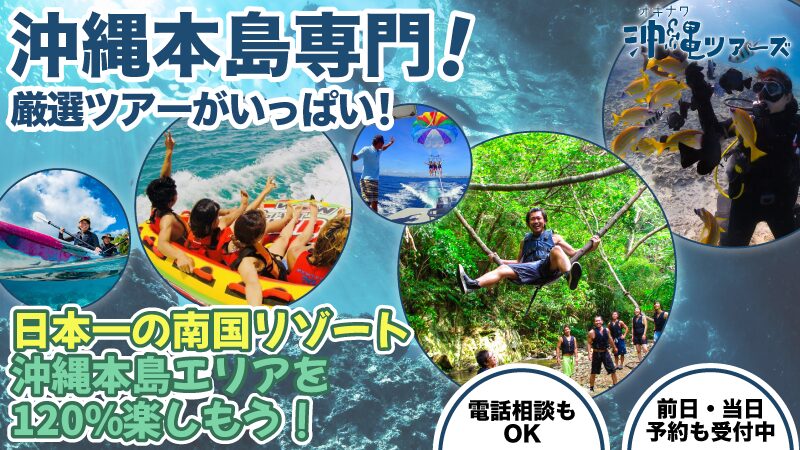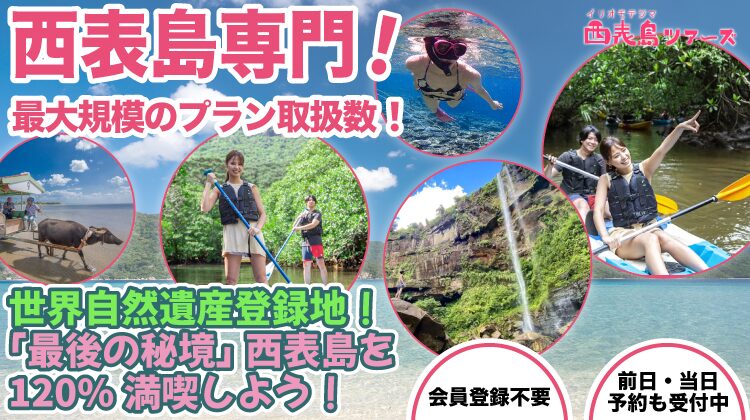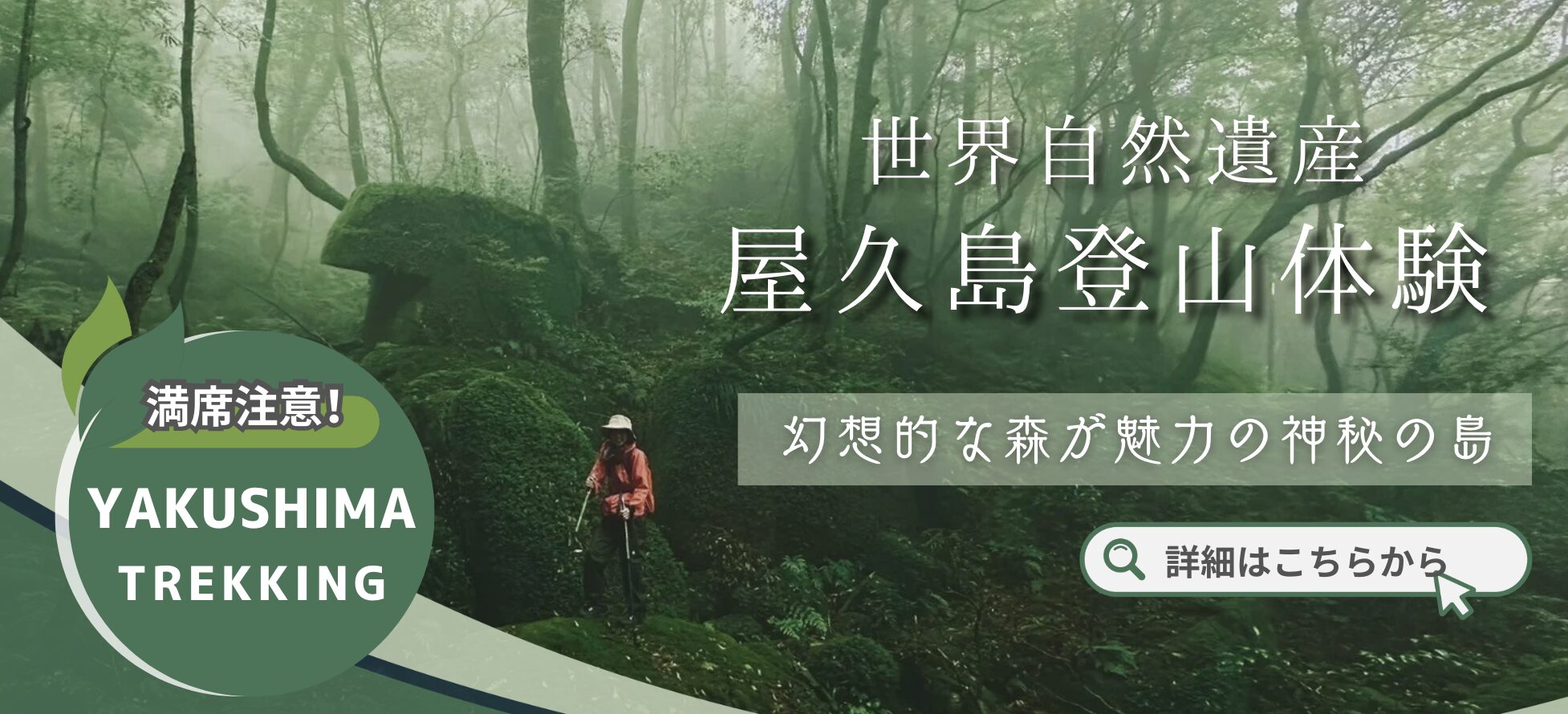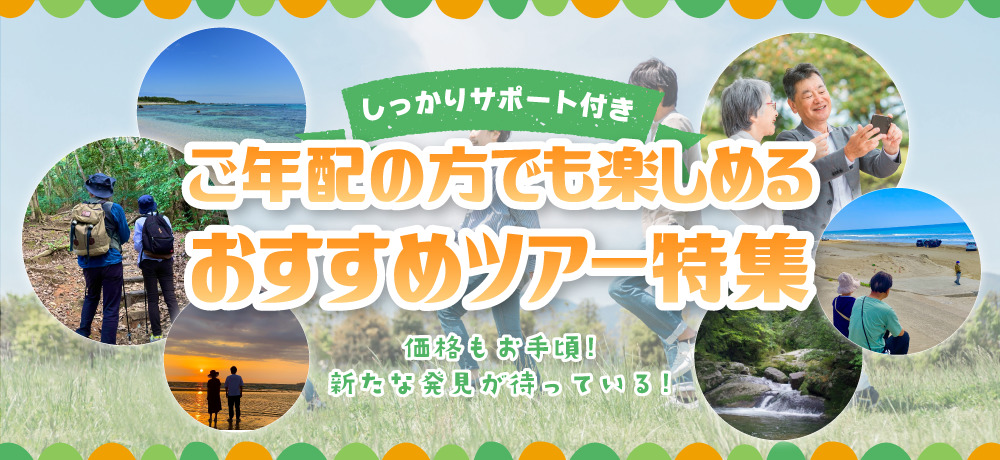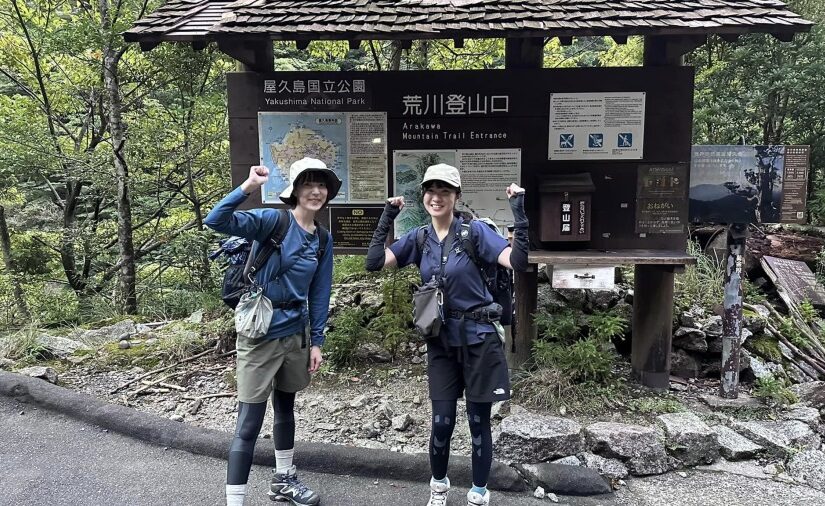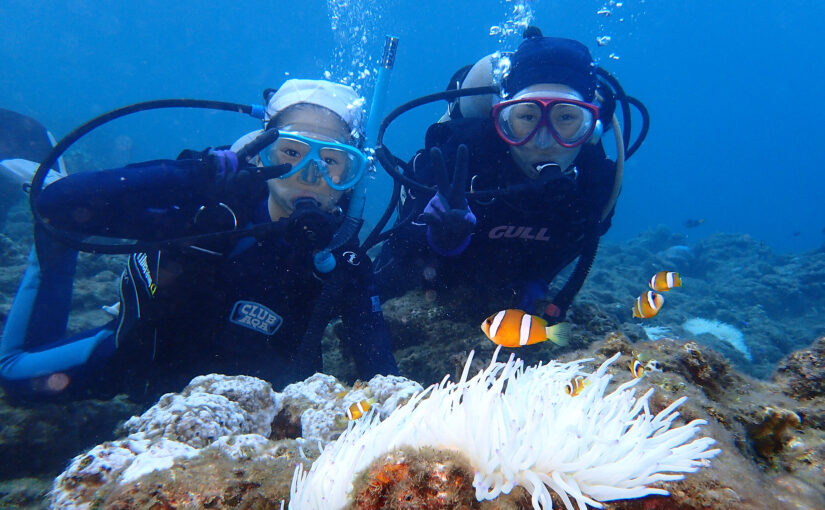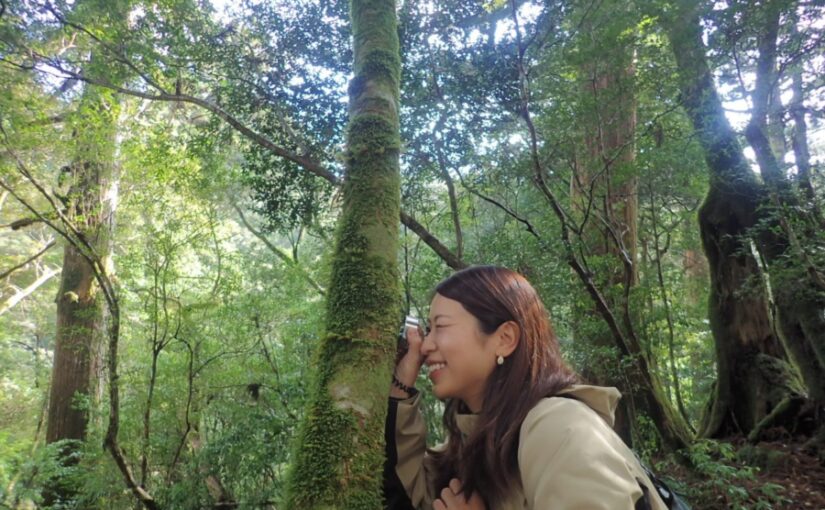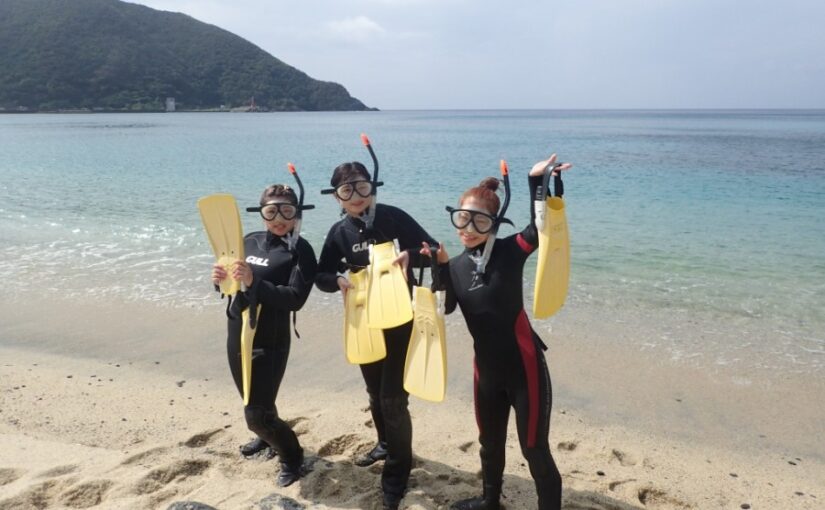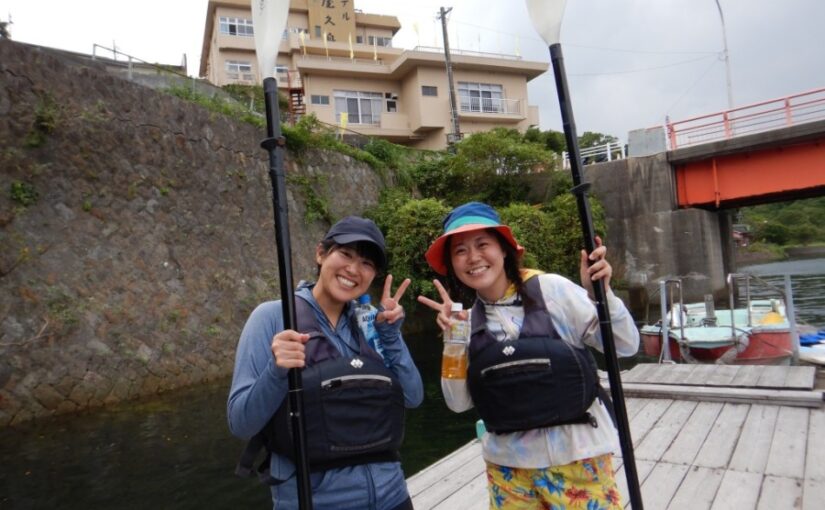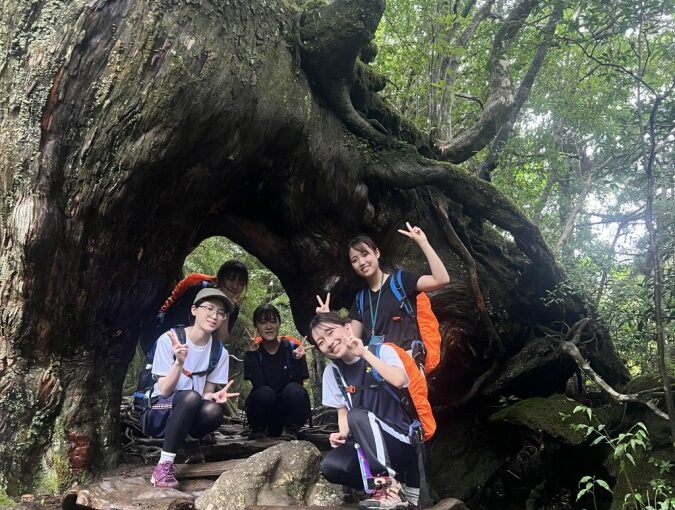Enjoy your trip to Yakushima Island! Introducing 7 essential activities in Yakushima
Table of Contents
Travel to World Heritage Site "Yakushima
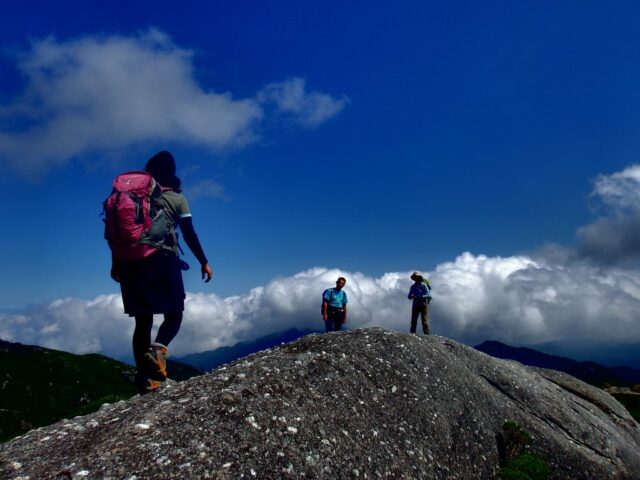
Yakushima was the first island in Japan to be officially recognized as a World Natural Heritage site in 1993.
There are parts of Yakushima National Park, a forest ecosystem protection area, and areas where native plants have been protected since ancient times, including the Yakushima cedar virgin forest, a national natural treasure.
It has unique landscapes unparalleled in the world, including Yakusugi cedar trees that can be several thousand years old, and are highly regarded by scholars around the world.
Yakushima's climate ranges from subtropical to cool temperate, making it an unusual island that can experience everything from Hokkaido to Kyushu.
In winter, the mountains are sometimes covered with snow. In spring, visitors can enjoy cherry blossoms, and in early summer, fresh greenery, offering a different view depending on the season.
Yakushima, recognized around the world, attracts many tourists throughout the year, who enjoy trekking in the wilderness and marine activities in the sea.
It is also the largest spawning ground for sea turtles in Japan, and tours to watch them lay their eggs are popular during the spawning season.
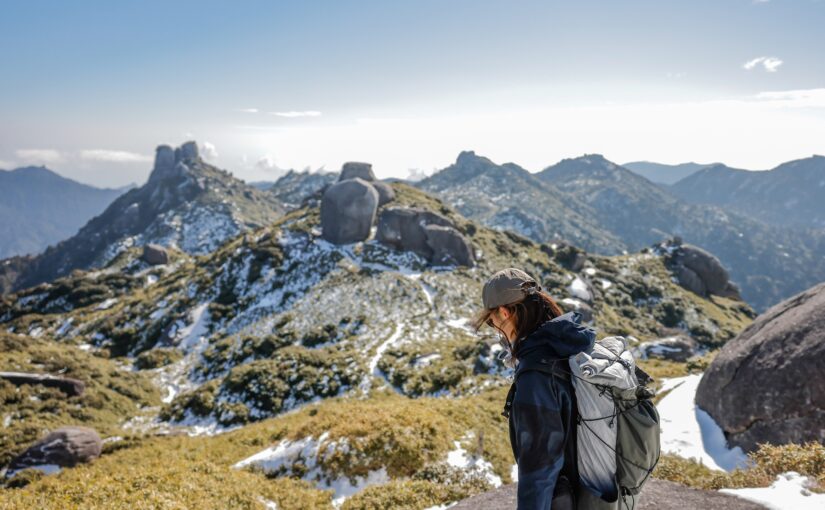 Yakushima Mountain Climbing/Trekking Tour Let's enjoy trekking (mountain climbing) to the unexplored region of Yakushima, a World Heritage Site! Trekking is one of the most popular activities to enjoy the nature of Yakushima. You can fully experience the fantastic scenery of lush green forests, beautiful rivers, and ancient trees [...]. (33 total) アクティビティの詳細を見る
Yakushima Mountain Climbing/Trekking Tour Let's enjoy trekking (mountain climbing) to the unexplored region of Yakushima, a World Heritage Site! Trekking is one of the most popular activities to enjoy the nature of Yakushima. You can fully experience the fantastic scenery of lush green forests, beautiful rivers, and ancient trees [...]. (33 total) アクティビティの詳細を見る 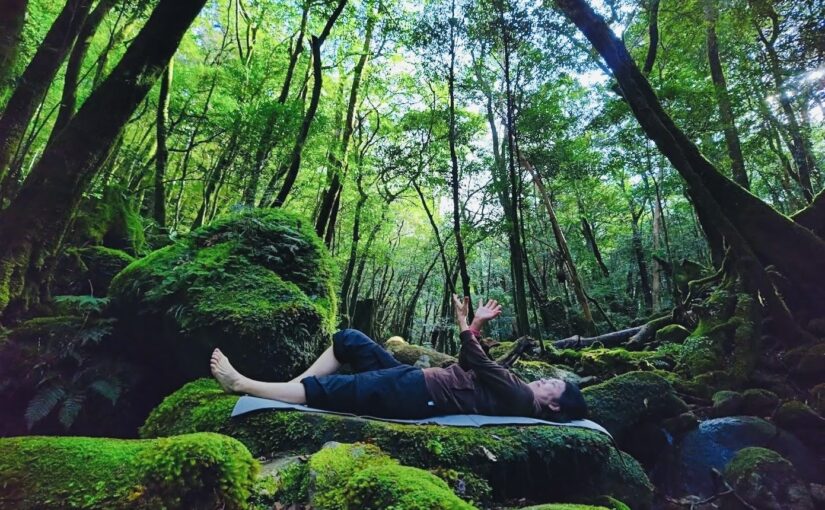 Yakushima Eco Tour (Island Sightseeing Tour) Let's enjoy Yakushima, a World Natural Heritage Site! Eco-tour of Yakushima (Island Sightseeing Tour) Eco-tour is a trip to enjoy nature while respecting it. For example, observing nature and learning about its origins when trekking, and activities to protect wild creatures [...]. (6 in total) アクティビティの詳細を見る
Yakushima Eco Tour (Island Sightseeing Tour) Let's enjoy Yakushima, a World Natural Heritage Site! Eco-tour of Yakushima (Island Sightseeing Tour) Eco-tour is a trip to enjoy nature while respecting it. For example, observing nature and learning about its origins when trekking, and activities to protect wild creatures [...]. (6 in total) アクティビティの詳細を見る
What is Yakushima?
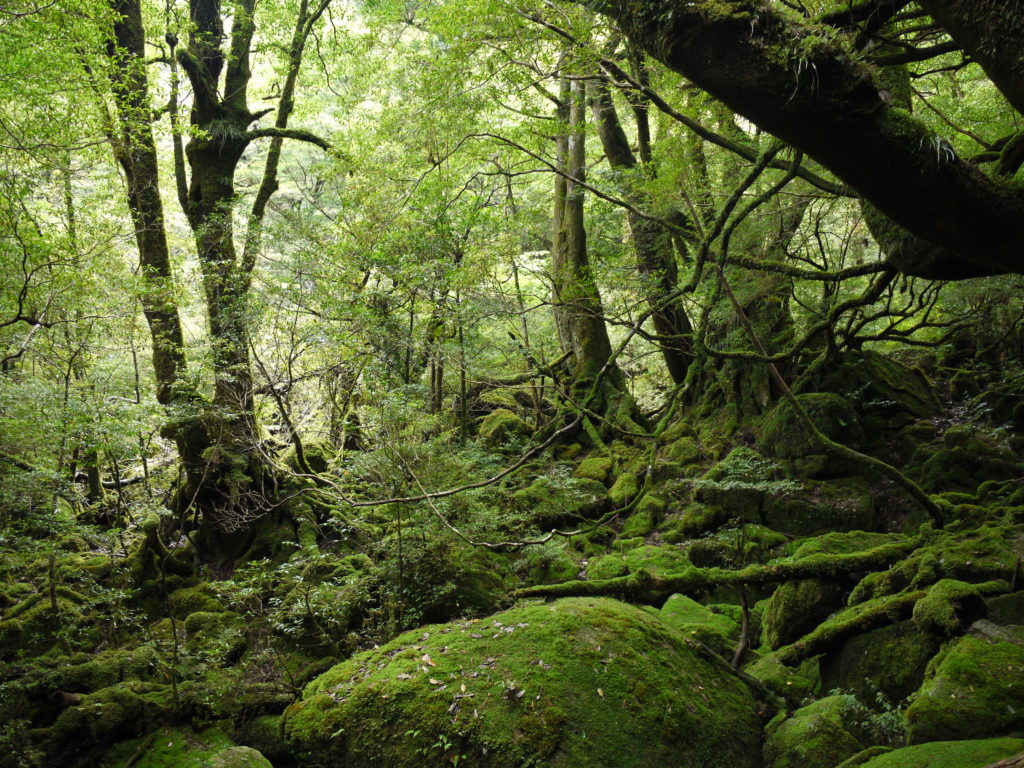
Yakushima Island is located about 60 km south-southwest of Cape Sata in Kagoshima Prefecture, the southernmost tip of the mainland.
It is the second largest island in Kagoshima Prefecture after Amami Oshima.
Yakushima is mostly mountainous, with peaks ranging from 1,000 to over 1,900 m. In the center of the island rises Miyanoura-dake, one of Japan's 100 most famous mountains and the highest peak in the Kyushu region.
The wet winds from the ocean hit the mountains, and the island is also famous for its abundant rainfall, with the expression, "It rains on Yakushima 35 days out of the month," meaning that annual precipitation amounts to about 4,500 mm on the plains and 8,000 to 12,000 mm in the mountainous areas.
Due to the abundant amount of rainfall, there is a lot of moss, and the popular tourist attraction, Shiratani Unsui Gorge, offers a fantastic world where the entire forest is covered with moss.
How to get to Yakushima Island?
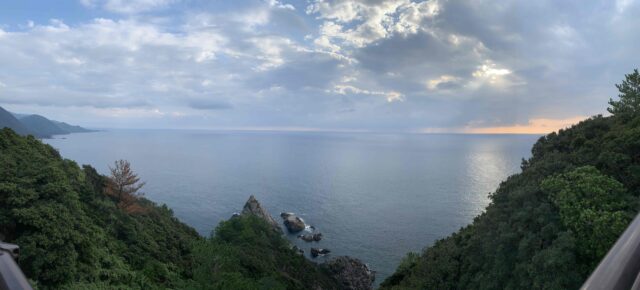
There are three main ways to get to Yakushima: airplanes, high-speed boats, and ferries.
When using airplanes, you can go from each city to Kagoshima Airport, and from there to Yakushima Airport in about 35 minutes.
There are also direct flights from Osaka (Itami) and Fukuoka, which take approximately 2 hours from Itami and 1 hour and 10 minutes from Fukuoka.
Fees vary depending on the point of departure and airline.
Low-cost airline LCCs operate from Haneda, Narita, Kansai, and Chubu International Airports to Kagoshima Airport, making it possible to reduce transportation costs.
When using a high-speed boat, the minimum time from Kagoshima main port is 2 hours, and by ferry it takes about 4 hours.
High-speed boats and ferries can be used to reduce transportation costs, but it also takes about one hour to travel from the airport to the port, so flying is recommended if you want to reduce travel time.
Fares for high-speed boats and ferries range from 5,200 to 9,200 yen one-way, and discounts are available for round-trip tickets except during peak season.
Weather in Yakushima
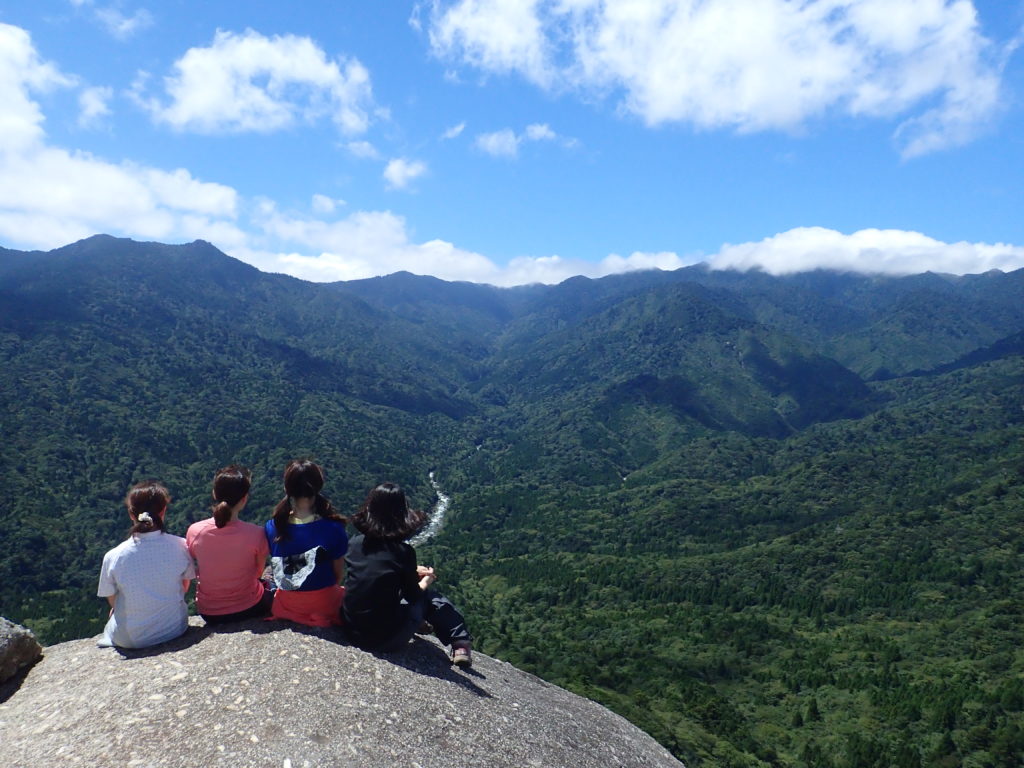
Yakushima Island receives a large amount of precipitation annually, but the amount of rainfall varies with the seasons.
Furthermore, the climate is characterized by year-round sunshine, cool summers and warm winters.
Since most of the island is mountainous, visitors should be aware of changing weather conditions.
It is important to check the weather in advance and then prepare clothing and personal belongings appropriate for the weather.
Umbrellas and raincoats are essential belongings, as the island rains a lot.
What is the best season to travel to Yakushima?
The best season for Yakushima is probably April to May in spring and October to November in fall.
Early to mid-April is relatively untraveled and the weather is warmer, with temperatures in the upper 20s.
October and November are also the best months for trekking, as there is relatively little rainfall.
In addition, sea turtles lay eggs from May to August, and in July, when the rainy season ends, visitors can enjoy swimming in the sea.
7 Must-Do Activities on Yakushima Island
Surrounded by wilderness, Yakushima is mostly mountainous and surrounded by beautiful ocean, offering a wide variety of activities.
Here are some of the activities you can enjoy in Yakushima.
trekking tour

Trekking tours to the classic sightseeing spots "Jomon Cedars" and "Shiratani Unsui Gorge" are popular on Yakushima.
Most tours are divided into two days, but tours that can be completed in one day or private tours are also available for those who have a shorter stay.
In addition to seeing Jomon cedars said to be 2,000 to 7,200 years old, visitors can see the fantastic world of moss covered with hundreds of species in the moss forest of Shiratani Unsui Gorge, also known as the "Mononoke Forest.
There are a wide variety of course options to choose from to suit each individual's schedule and fitness level, and many tours are suitable for beginners as well.
Generally, most tours start early in the morning from 4:00 to 5:00 am, allowing you to fully enjoy the mysterious wilderness of Yakushima.
 Yakushima Mountain Climbing/Trekking Tour Let's enjoy trekking (mountain climbing) to the unexplored region of Yakushima, a World Heritage Site! Trekking is one of the most popular activities to enjoy the nature of Yakushima. You can fully experience the fantastic scenery of lush green forests, beautiful rivers, and ancient trees [...]. (33 total) アクティビティの詳細を見る
Yakushima Mountain Climbing/Trekking Tour Let's enjoy trekking (mountain climbing) to the unexplored region of Yakushima, a World Heritage Site! Trekking is one of the most popular activities to enjoy the nature of Yakushima. You can fully experience the fantastic scenery of lush green forests, beautiful rivers, and ancient trees [...]. (33 total) アクティビティの詳細を見る
Diving Tours
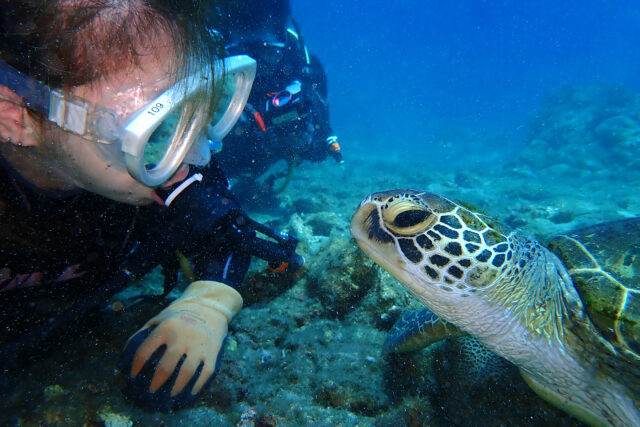
Diving is a popular activity on Yakushima Island, where you can carry an oxygen tank on your back and dive into the ocean to observe various ecosystems.
Yakushima Island, recognized as a World Heritage site, is world famous for its virgin forests, but you can also enjoy the beautiful sea world.
Directly influenced by the Kuroshio Current, the waters of Yakushima are crystal clear, and the ocean world can be seen for a long distance, making it ideal for diving.
In addition, warm ocean currents lead many fish to Yakushima Island and nurture coral reefs, which means that a wide variety of fish and coral reefs can be seen.
The various environments, including points where large migratory fish swim, white sand beaches, and points for leisurely underwater observation, make the area popular among a wide range of travelers.
In addition, the probability of encountering sea turtles increases through the summer, as this is the time when they lay their eggs.
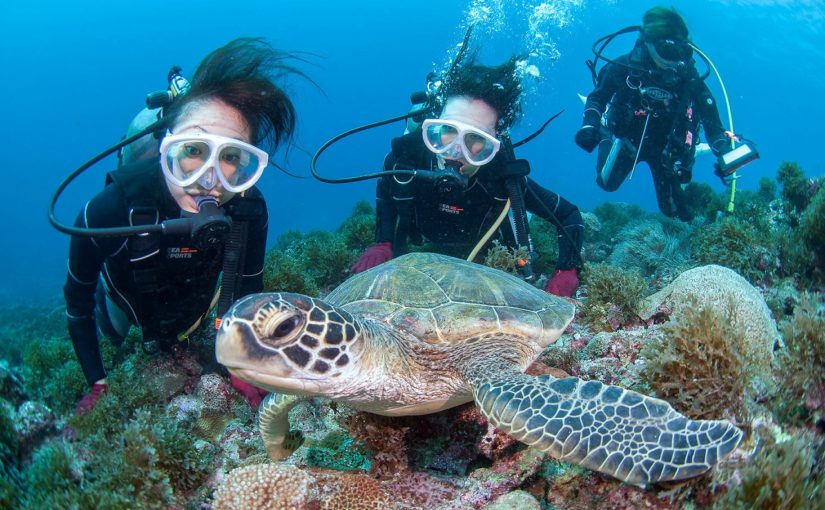 Yakushima Diving (Scuba Diving) Tour Enjoy the clear waters of Yakushima! Welcome First-Time Divers☆Yakushima Diving Tour Diving is one of the popular activities in Yakushima, where you can dive deeper and enjoy the ocean more than snorkeling. Because you can breathe underwater, you can enjoy beautiful coral reefs and [...]... (8 in total) アクティビティの詳細を見る
Yakushima Diving (Scuba Diving) Tour Enjoy the clear waters of Yakushima! Welcome First-Time Divers☆Yakushima Diving Tour Diving is one of the popular activities in Yakushima, where you can dive deeper and enjoy the ocean more than snorkeling. Because you can breathe underwater, you can enjoy beautiful coral reefs and [...]... (8 in total) アクティビティの詳細を見る
SUP Tour
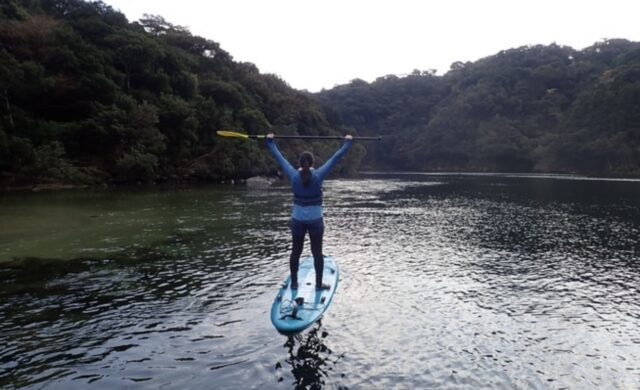
SUP stands for "stand-up paddleboarding," a marine activity that originated in Hawaii.
The board is floated on the surface of the water with the stability of a surfing board, and you stand on it and paddle with a single paddle to explore the ocean.
In addition to pre-tour training, many tours are designed for first-timers to enjoy this activity on calm water.
There is a wide variety of half-day courses and full-day tours combined with snorkeling, making it one of the most popular activities that can be easily adjusted to your schedule.
In addition to the ocean, the Awa River, which represents Yakushima, has a gentle current, so beginners and children can enjoy SUP.
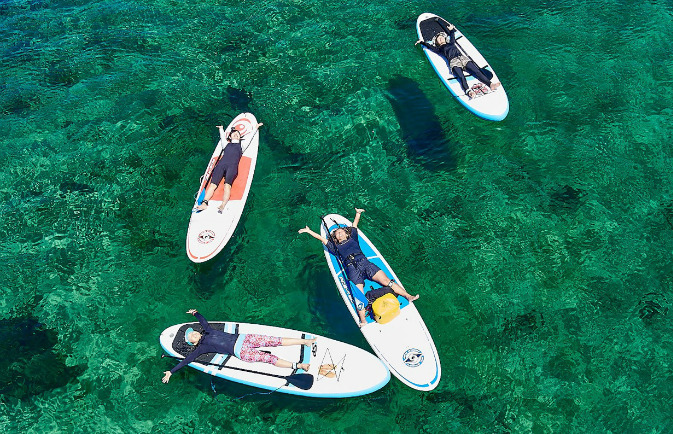 Yakushima SUP and Stand Up Paddle Tour Let's enjoy SUP in Yakushima, a luxurious time surrounded by nature! SUP stands for "Stand Up Paddle Surfing", a marine activity in which you ride on a special board like a surfboard and paddle on the water. SUP [...]. (4 in total) アクティビティの詳細を見る
Yakushima SUP and Stand Up Paddle Tour Let's enjoy SUP in Yakushima, a luxurious time surrounded by nature! SUP stands for "Stand Up Paddle Surfing", a marine activity in which you ride on a special board like a surfboard and paddle on the water. SUP [...]. (4 in total) アクティビティの詳細を見る
Canoe Tour
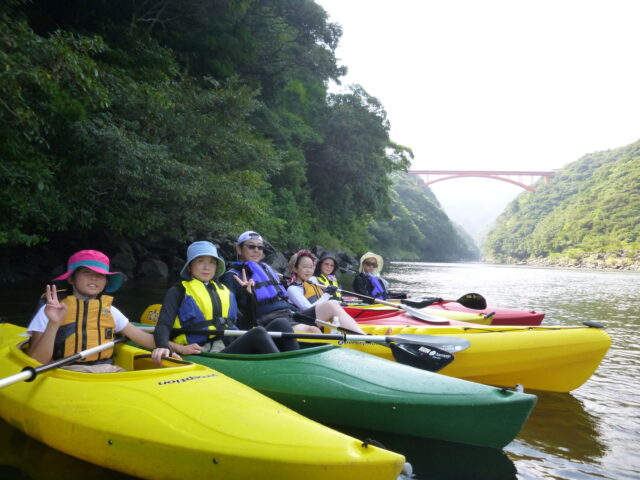
Canoe is a general term for boats that use paddles to wade through the water and move through the surface.
Surrounded by the sea and with 140 rivers flowing through it, Yakushima offers a wide range of canoeing experiences for beginners and experts alike.
The forests of Yakushima Island, where there is abundant rainfall throughout the year, are well watered here and there, and the river water is very clear because the beautiful forests filter the rainwater.
Canoeing, which can be enjoyed on both the river and the ocean, is a popular activity on Yakushima, and many tours are offered.
The Awa River, in particular, is a typical canoeing spot on Yakushima.
The Awa River is a wide, clear river with a gentle current, making it easy and exhilarating to paddle even for beginners.
Canoeing is also a great way to experience the ocean of Yakushima, which is surrounded by the open sea.
In summer, kayaking in the sea at Nagata Inaka Beach, the largest loggerhead turtle spawning ground in the North Pacific, is a great way to see turtles swimming.
In addition, in the Ichiminato and Shitoko areas around the northern part of the island, visitors can enjoy a leisurely kayak stroll while viewing Iwo Jima as it erupts in a cloud of smoke.
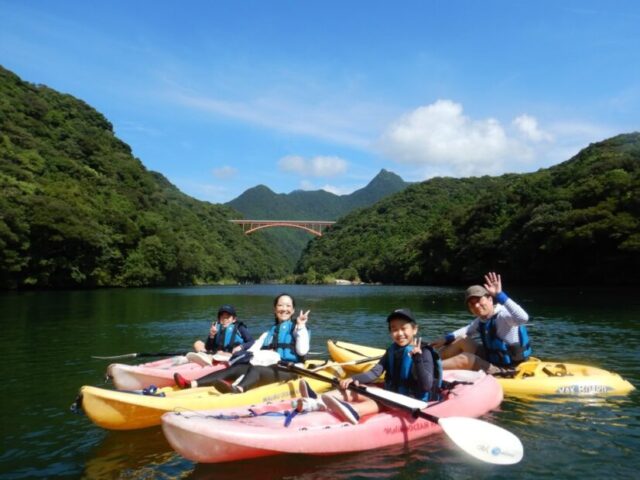 Yakushima River Kayak Canoe Tour Welcome to join alone☆Explore the deep nature! Introducing Yakushima Canoe and Kayak Tours Canoeing (kayaking) tours in Yakushima are activities in which you can paddle while enjoying the rich nature. You can enjoy the unique charm of Yakushima while observing the unique ecosystem [...]. (4 in total) アクティビティの詳細を見る
Yakushima River Kayak Canoe Tour Welcome to join alone☆Explore the deep nature! Introducing Yakushima Canoe and Kayak Tours Canoeing (kayaking) tours in Yakushima are activities in which you can paddle while enjoying the rich nature. You can enjoy the unique charm of Yakushima while observing the unique ecosystem [...]. (4 in total) アクティビティの詳細を見る
Eco-tour (island sightseeing)
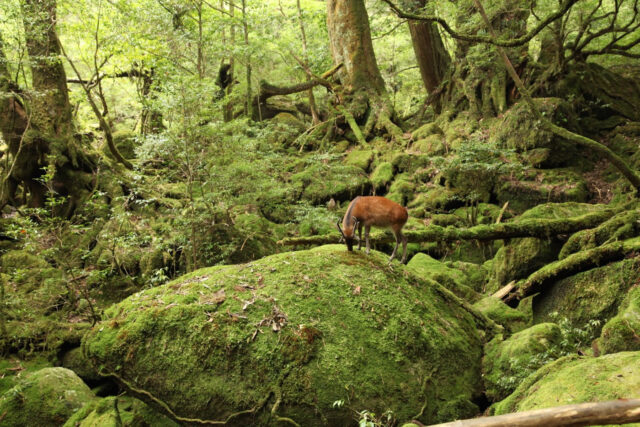
An eco-tour is a trip to learn about nature and culture and enjoy it while preserving the natural environment and the lives of the people who live there.
Trekking to observe nature, learn about the origins of the island, and participate in activities to protect the natural environment and wildlife is one of the eco-tours.
In Yakushima, you can enjoy tours unique to Yakushima, such as trekking in a World Heritage primeval forest and a forest lined with giant Yakusugi cedar trees, and observing sea turtle spawning scenes.
There are many types of eco-tours in Yakushima, including standard trekking, yoga experience in the wilderness, and forest therapy where you can observe plants in a quiet place a little off the trail and enjoy nature at a leisurely pace.
Other experiences include an aerial boardwalk, where visitors can observe the forest from the air by walking on bridges between the trees, and a zip-line experience, where visitors move through the forest like Tarzan.
With so many choices, it can be said that everyone from small children to the elderly can enjoy the experience.
 Yakushima Eco Tour (Island Sightseeing Tour) Let's enjoy Yakushima, a World Natural Heritage Site! Eco-tour of Yakushima (Island Sightseeing Tour) Eco-tour is a trip to enjoy nature while respecting it. For example, observing nature and learning about its origins when trekking, and activities to protect wild creatures [...]. (6 in total) アクティビティの詳細を見る
Yakushima Eco Tour (Island Sightseeing Tour) Let's enjoy Yakushima, a World Natural Heritage Site! Eco-tour of Yakushima (Island Sightseeing Tour) Eco-tour is a trip to enjoy nature while respecting it. For example, observing nature and learning about its origins when trekking, and activities to protect wild creatures [...]. (6 in total) アクティビティの詳細を見る
Snorkeling Tour
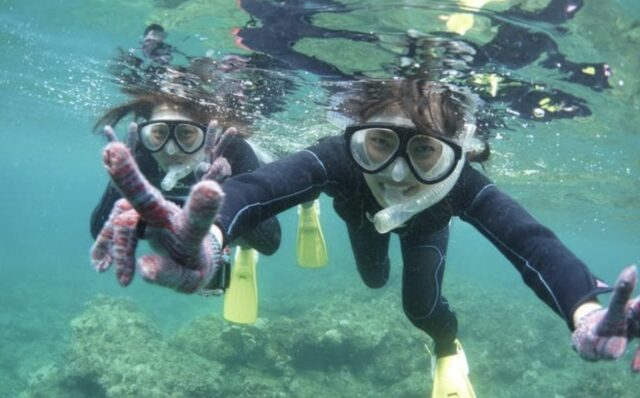
Snorkeling is a classic activity.
Wearing snorkeling goggles, fins, and a wetsuit to breathe while keeping your face underwater, you can look into the ocean surface and enjoy the underwater world while floating in the water.
This activity can be enjoyed with life jackets and floatation rings, and is recommended for those who are not good at swimming and small children.
Yakushima is also said to be the sea area with the largest number of fish species in Japan, and is home to a large number of tropical fish, especially sea turtles, bear fleas, and solacefish.
This is a popular marine activity on Yakushima because of the many snorkeling spots, as the Kuroshio Current allows for up-close observation of creatures in the clear blue waters.
In addition, snorkeling can be experienced on Yakushima not only in summer, but also in October and November.
It is recommended to join a tour with a guide who knows Yakushima well and will take you to the right point at the right time of the year.
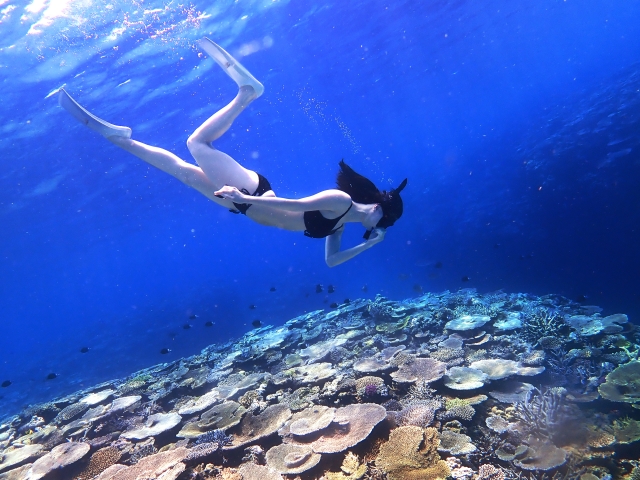 Yakushima Snorkeling Tour Let's swim with sea turtles in Yakushima☆ Excellent transparency! Snorkeling is an easy and fun marine activity where you dive into the ocean with a breathing tube called a "snorkel" in your mouth. It is an easy and fun marine activity that even beginners can enjoy. (5 in total) アクティビティの詳細を見る
Yakushima Snorkeling Tour Let's swim with sea turtles in Yakushima☆ Excellent transparency! Snorkeling is an easy and fun marine activity where you dive into the ocean with a breathing tube called a "snorkel" in your mouth. It is an easy and fun marine activity that even beginners can enjoy. (5 in total) アクティビティの詳細を見る
Shower trekking tour (climbing a stream)
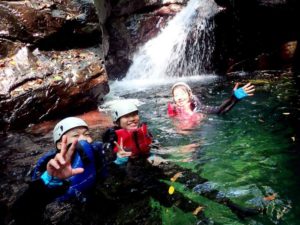
Shower trekking is a tour that climbs rocks and waterfalls while soaking in the stream and proceeding to the upper reaches of the stream.
It is said that this style of mountaineering, originally unique to Japan, developed to climb mountains with no paths.
You can swim across the beautifully clear river, climb up the waterfall while splashing in the water, and on the way back, you can jump in from a high rock or go down the stream like a water slide, all of which are thrilling experiences.
It is a rare and precious time to experience an adventure and a great opportunity to get in touch with the great outdoors.
For beginners, there are courses that start in the lower reaches of the Nagata River, in a bright, open stream called Yokogawa Canyon.
Other courses can be selected according to one's own experience, making it possible to enjoy the program without any difficulty.
If you join a tour, you can rent the necessary equipment and have a guide with you.
10 Popular Spots in Yakushima
Yakushima Island, registered as a World Heritage site, has many attractions and is a famous tourist spot in Japan.
Here are some of the popular spots on Yakushima that are so attractive that travelers from all over Japan come to visit.
Jomon cedar (Cryptomeria japonica)
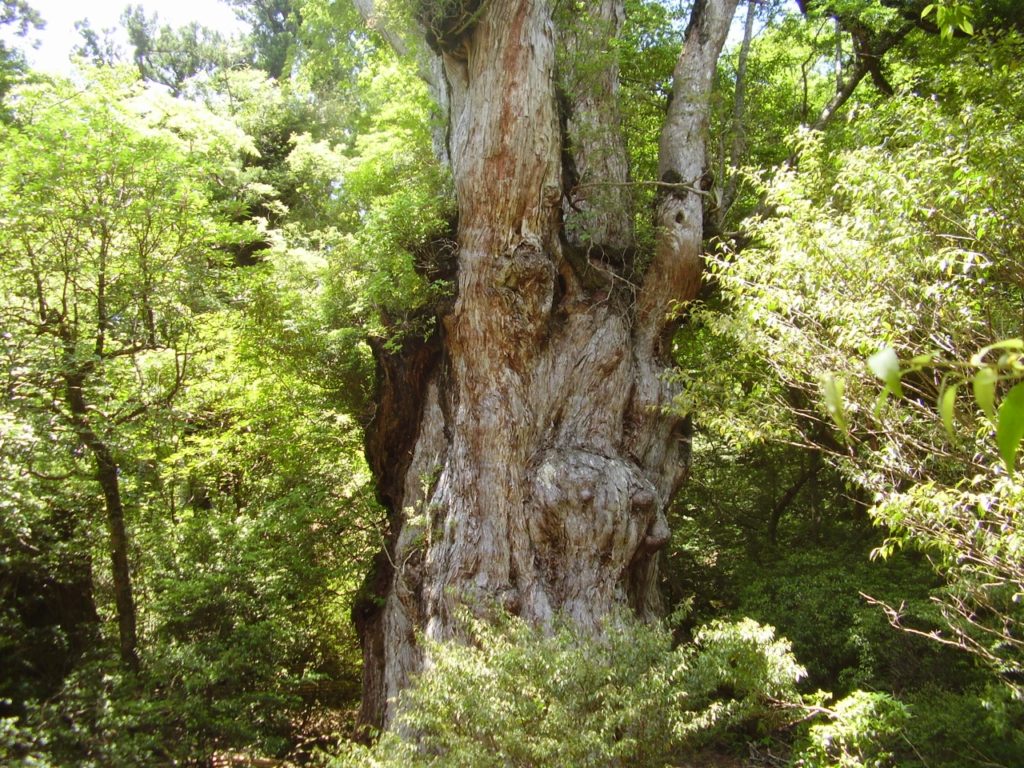
Among cedars, a plant native to Japan, on Yakushima Island, older cedars over 1,000 years old are called yakusugi, while young trees a few hundred years old are called kosugi.
Among the Yakusugi cedars, the Jomon cedar is famous as one of the largest and oldest cedar trees, and there are various theories about the age of the tree, ranging from 2,000 to 7,200 years.
The Jomon cedar, which is said to remain in the odd circumstances of being cut down as an unusable giant tree in the Edo period, is approximately 25.3 meters tall and has a chest-high circumference of 16.4 meters, and its bumpy trunk and surface seem to indicate that it has survived the harsh natural environment.
Since many climbers come to see the Jomon cedars, the view can be seen from the observation deck to prevent damage to the roots due to tread pressure.
To see the Jomon cedars, walk about 5 hours one way from the Arakawa trailhead on a flat trolley path or mountain.
Yakusugiland

Yakusugiland is located upstream of the Arakawa River, a tributary of the Awa River, and together with Shiratani Unsui Gorge, is a natural recreation forest established by the Forestry Agency.
Cedar trees over 1,000 years old, called Yakusugi, grow only deep in the mountains where the terrain is steep.
In Yakusugiland, visitors can view old-growth cedar forests that have almost disappeared in Japan.
There are several walking trails in the forest, where large cedar, tsuga, and fir trees can be seen, showing the life force of the Yakusugi cedar that has lived since ancient times.
Other popular viewing spots include the giant Yakusugi cedar trees, which are estimated to be 1,800 years old, the Butsudasugi cedar, the Sanne cedar, the Hachikosugi cedar, and the Tenbashira cedar, the first and second tallest trees on Yakushima.
The trail leading to Mt. Taichung enters the World Natural Heritage Area and the Special Protection Area of the National Park on the way to the summit, where giant trees such as Harigiri and Tsuga can be seen, and the summit area is home to Yakushima rhododendron and Japanese alder, which bloom beautifully in season.
Yaksugiland can be accessed by taking the Miyanoura-Yaksugiland route and getting off at the last stop, Yaksugiland.
We recommend that you check the timetable as the number of buses is limited.
Also, keep in mind that Yakusugiland requires a 500 yen entrance fee for high school students and older.
Shiratani Unsui Gorge (Shiratani Unsui Gorge)
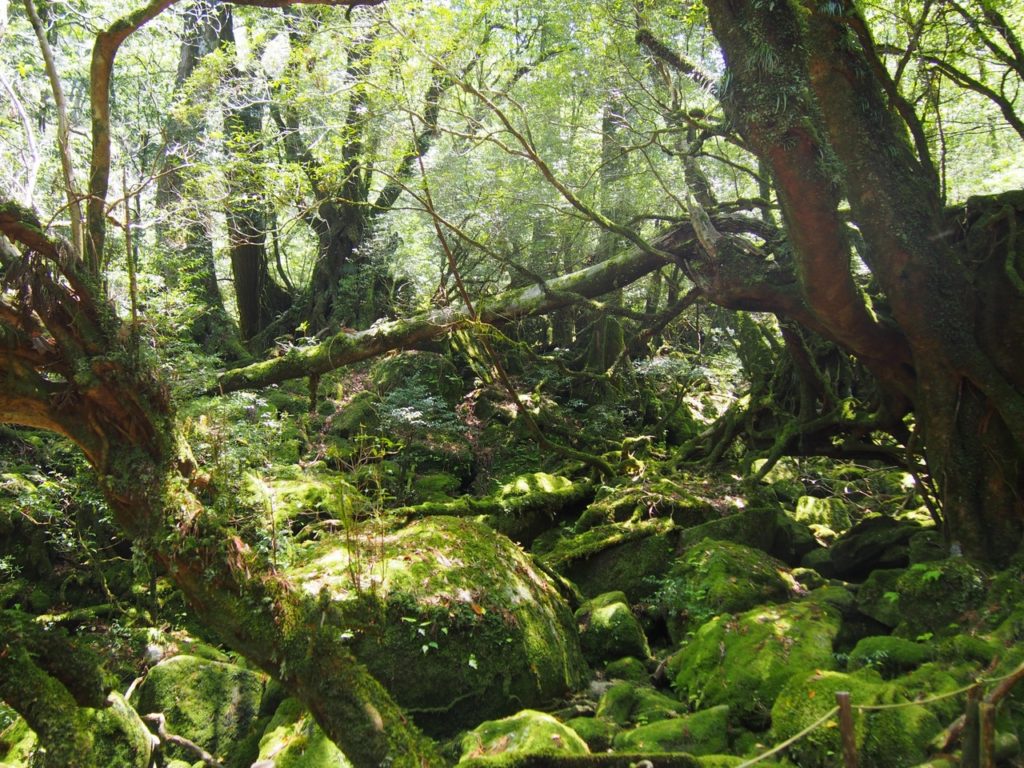
Shiratani Unsui Gorge was selected by the Forestry Agency in 1979 as a natural recreational forest in the Shiratani River basin.
The mysterious atmosphere of the forest is said to have served as the model for the forest in the movie "Princess Mononoke," and is particularly popular on Yakushima, attracting many tourists every day.
The course, which allows visitors to slowly observe a beautiful mountain stream and a rich green forest covered with hundreds of varieties of moss, is a popular course that is easy to visit for beginners and those who are not good at serious mountain climbing, as the entrance elevation is approximately 620 meters.
The Shiratani Unsui Gorge, with its lush moss and oddly shaped old trees, has rivers running through it at various places, and there are spots where you can take a sip of water, so if you bring a bottle, you can taste natural water.
Shiratani Unsui Gorge is also home to such sights as kuguri cedars and taikoiwa (drum-shaped rocks).
Kuguri-Sugi is a cedar that you can walk under, and Taiko Iwa is a large granite rock that juts out from the mountainside, offering beautiful views and a panoramic view of the sky and the forests of Yakushima.
To access Shiratani-unsui Gorge, take the local bus from Miyanoura Port to Shiratani-unsui Gorge (last stop).
If you are renting a car, use the parking lot as there are approximately 20 parking spaces available and parking is free of charge.
A 300 yen entrance fee is required for high school students and older.
Nagata Inaka Beach
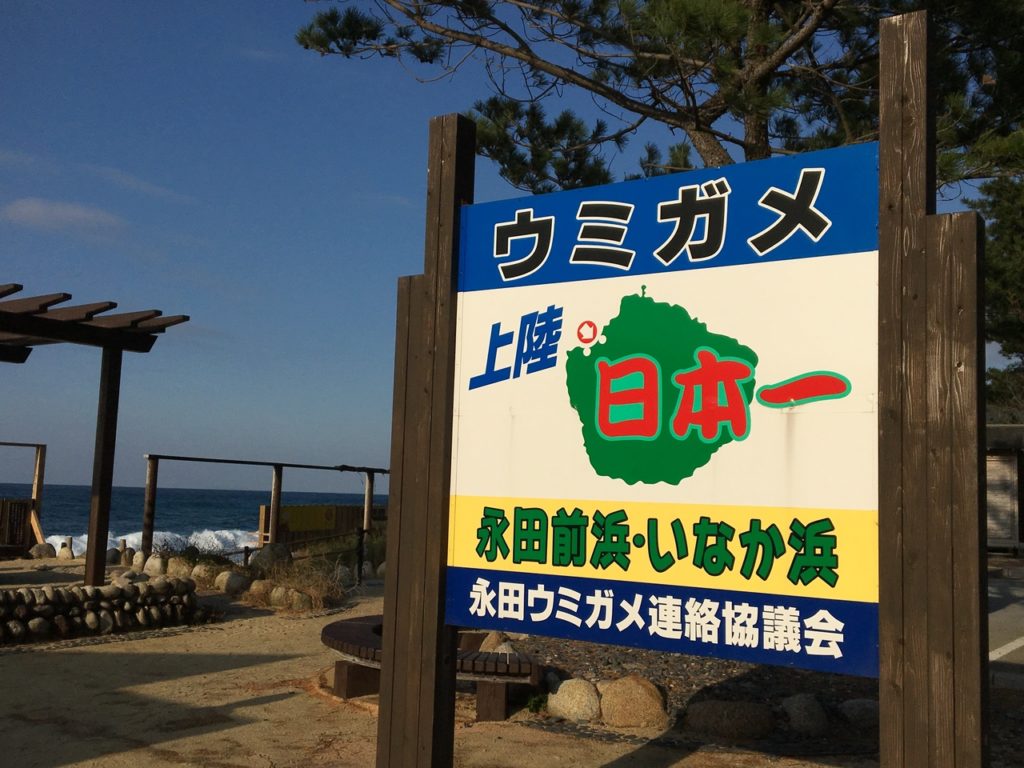
Nagata Inaka Beach is a beautiful beach located in the northwestern part of Yakushima and is one of the few precious sandy beaches.
It is famous as the best sea turtle spawning ground in Japan and is registered under the Ramsar Convention as a wetland.
The sandy beach extends about 1 km to the nose of Yotsuse, and is rough yellow sand made of crushed granite, which falls off easily if you brush it off with your hands.
From May to July, green and loggerhead turtles come ashore on the beach to lay eggs.
During the spawning and hatching season from May to August, access to the beach is restricted from 19:30 at night to 5:00 the next morning, so you can observe the spawning by participating in a sea turtle observation session.
It is a precious spot where visitors can enjoy swimming in the sea during the day and observe sea turtles spawning at night.
Wilson stock
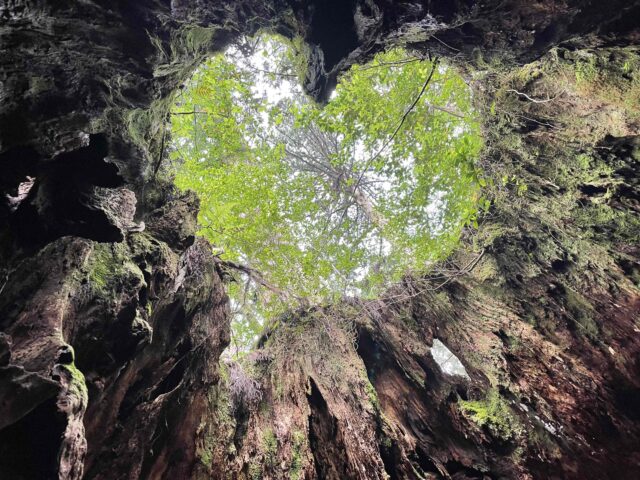
Wilson stump is a stump of Yakusugi cedar, which is said to have been cut down about 400 years ago during the Shimazu domain period, and has a large hollow inside.
The estimated age of the tree is approximately 2000 years, and the stump is approximately 4 meters high and 13.8 meters in circumference.
There is a small shrine with fresh water flowing inside.
It is named after Dr. Wilson, a British botanist who investigated the Yakusugi cedar in the Taisho era (1912-1926) and introduced this large plant to the world.
It takes about 3 hours from the Arakawa trailhead, and can be seen on the way to climb the Jomon cedars, which are now popular among women for their heart-shaped hollows, making them effective for fulfilling love.
seven-leaved cedar tree
Located at the innermost part of Shiratani Unsui Gorge, Shichibonsugi is a Yakusugi cedar with seven branches growing out of the tip of its trunk, which was broken by strong winds, and numerous plants growing on its undulating, moss-covered trunk.
The Shichibonsugi cedar, which has survived the long years of typhoon-prone Yakushima and bears the marks of broken trunk branches that remain on most of the old trees, is about 8.3 meters around the trunk and about 18 meters tall.
It takes about 10 minutes from Kuguri-Sugi, the turnaround point of the primeval forest course, on the way to Taikoiwa and back in Shiratani-Unsui Gorge.
Mt Miyanoura
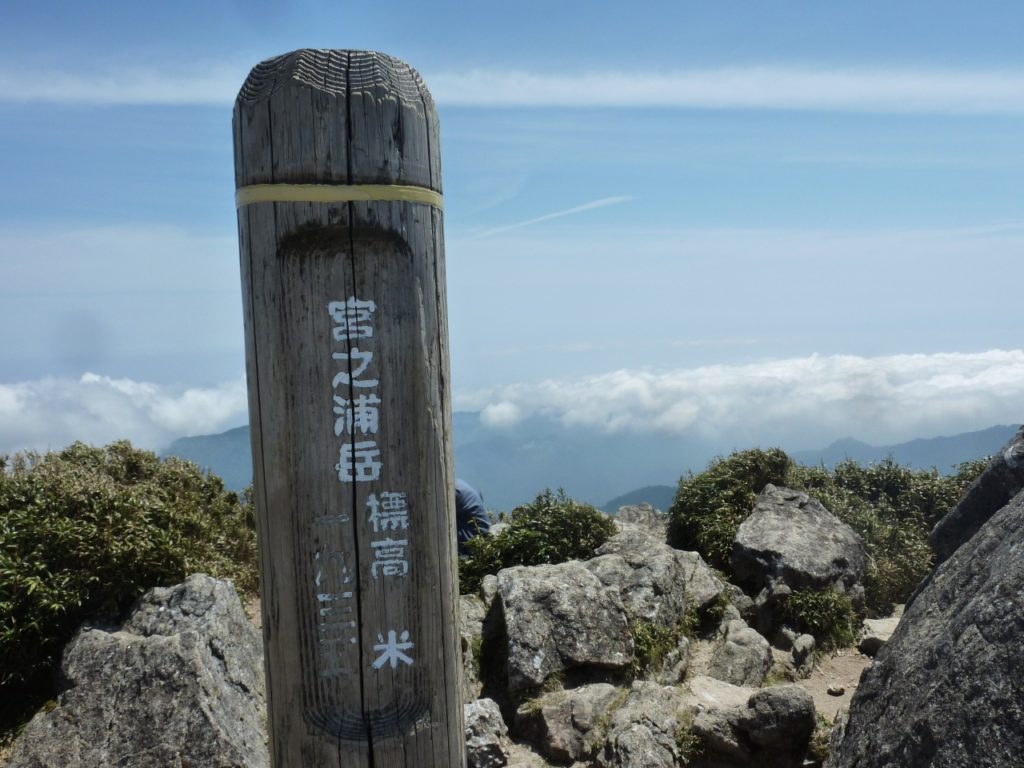
Miyanoura-dake (宮之浦岳), one of the 100 most famous mountains in Japan, is located in the central part of Yakushima, and at a height of about 1936 m, it is the highest peak on Yakushima and the highest peak in the Kyushu region.
The geology is composed of granite, and Yakushima dake, Yakushima rhododendron, asebi, and Miyamabyakushin can be seen near the summit, which is over 1,600 m above sea level. Below this is a forest area with Yakushima cedar and Himeshara oak.
Another attraction is that different plants can be enjoyed at different times of the year.
You can choose from overnight tours, day tours, and tours that take you to the Jomon cedars, as well as tents and mountain huts for a more relaxing stay.
Since snow accumulates near the summit in winter and temperatures vary greatly between morning and evening in spring and fall, clothing and physical condition are important depending on the time of year for climbing.
Okawa Falls
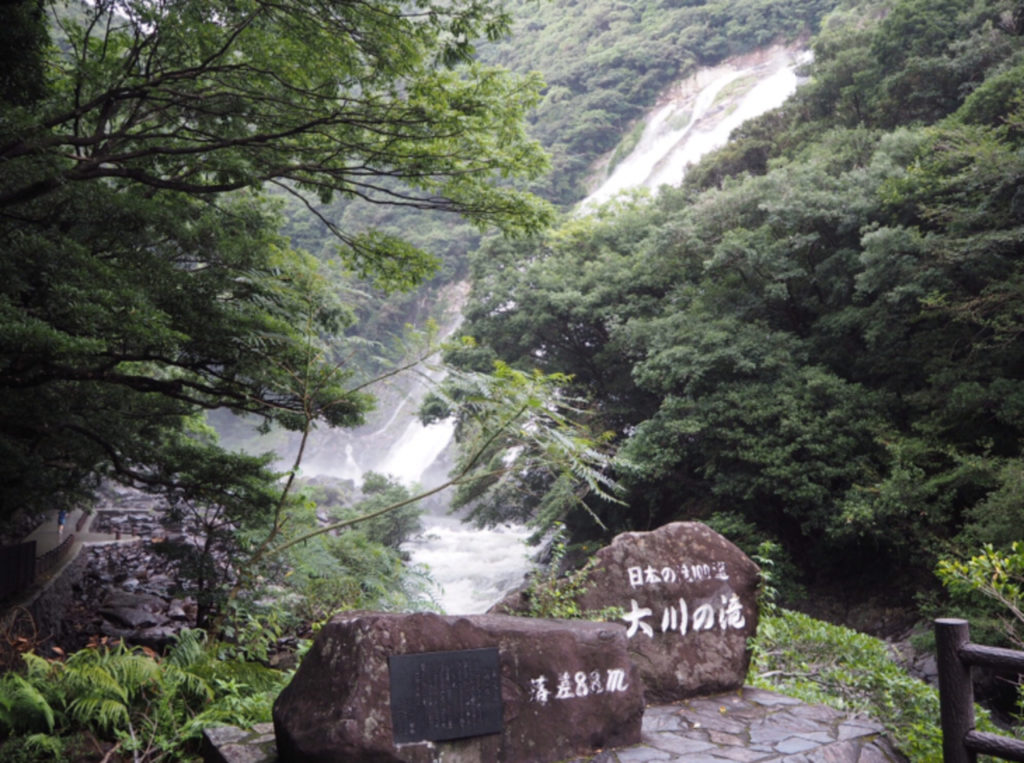
Okawa Falls, located on the west side of the island, is the largest waterfall on Yakushima and has been selected as one of the 100 best waterfalls in Japan.
The waterfall, which cascades down from an 88-meter-high cliff, the highest in Kyushu, is a powerful sight to behold.
In addition, the geology around Okawa Falls is composed of rocks called hornfels, which are formed by thermal metamorphism of sedimentary rocks.
You can walk right to the bottom of the waterfall basin, making it a great spot to cool off in the summer with plenty of negative ions.
Nearby is the Okawa Spring, which is said to be good for one's health if one drinks the water that flows out from between the rocks.
If renting a car, it takes about 1 hour and 15 minutes from Miyanoura. If taking the local bus, get off at the Okawa Falls bus stop and walk about 5 minutes from the bus stop.
Mt. Tachu (in Kyoto)
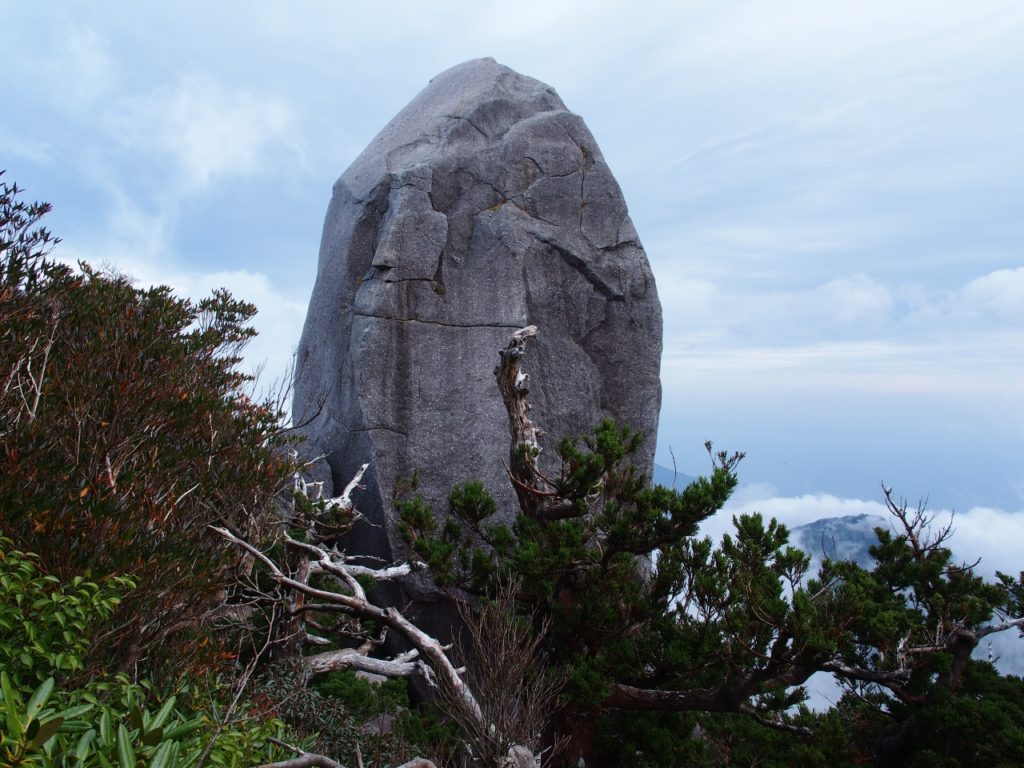
Taichudake is about 1,497 meters above sea level and is one of the representative mountains of Yakushima.
Since it was recognized as a World Heritage site, many climbers have been climbing to the summit.
At the top of the mountain is the monolithic Tenpushuseki, a 40-meter-high rock, and the size of Tenpushiseki can be clearly seen from the town, where the unique giant rock rises like a thumbs-up.
The entrance to climbing Mt. Taichung is Yakusugiland, and although it is relatively easy to walk inside Yakusugiland, the path becomes steeper when you start climbing Mt.
Arriving at the summit of Taichudake, you can see the rocky peaks of Aiko-dake and Hanaori-dake, Mt. Ishizuka, and if the weather is good, you can see as far as the rocket base on Tanegashima.
Take a rental car or local bus to Yakusugiland and enter the mountain from the Yakusugiland trailhead.
Climbing time is about 7 hours round trip.
In addition, a 300 yen entrance fee is required for high school students and older.
hedge cedar (Cedrus deodara)
Kuguri cedar is a cedar located in Shiratani Unsui Gorge. It has a hollow enough for people to pass under its roots, and the trail itself passes under the Kuguri cedar.
There is a theory that the Kuguri-Sugi in Shiratani Unsui Gorge was renewed on top of a fallen hardwood tree such as Tsuga, which easily decays, because there is no fallen tree left as a foundation for the Kuguri-Sugi.
The age of the tree is unknown. The tree is approximately 22 meters tall with a breast height circumference of 3.1 meters.
Some people say that it makes them smarter when they pass through it.
Kuguri cedars can be seen along the Shiratani Unsui Gorge's primeval forest trail course.
Points to keep in mind when traveling to Yakushima
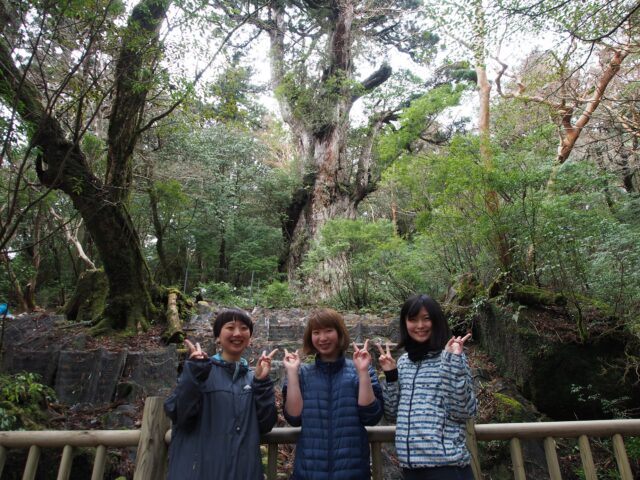
Yakushima Island, designated as a World Heritage Site, is a popular tourist destination that attracts many visitors throughout the year.
Here are some tips for enjoying your trip while protecting the spectacular nature of Yakushima.
Make your hotel and tour reservations early!
Late July through September is the high season on Yakushima.
The area is the liveliest of the year, with families coming through the end of August and groups of college students and others starting in September.
Early reservations are recommended, especially during the Obon season, when the area becomes crowded and availability of lodging, rental cars, and tours may run out.
On some days, around 200-300 people visit the Jomon Cedars of Yakushima alone in a single day, so we recommend that you prepare your travel plans well in advance of your visit.
Pay attention to the closing time of restaurants.
There are some restaurants and supermarkets within walking distance around Yakushima Airport, Miyanoura Port, and Awa Port.
However, as you move away, there are very few stores that can be reached on foot, and many close early for dinner, so we recommend that you do your research well in advance.
It is also recommended to make reservations in advance, as popular restaurants may be full and you may not be able to get in.
Cherish the nature of Yakushima!
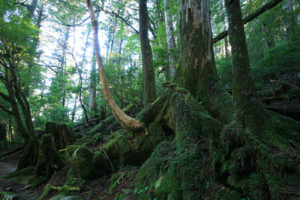
Yakushima is a World Natural Heritage island.
When visiting for sightseeing, it is important to be considerate of the precious nature and to observe good manners.
When visiting the Jomon cedars, please remember the rules and be sure to act in a manner that preserves nature, as overnight stays in tents, the use of firearms, etc. are prohibited and toilet facilities are designated.
Please note that climbing on or damaging the stock is strictly prohibited in Wilson's stock, and feeding wild animals such as deer and monkeys is also prohibited.
Pay attention to the intensity of sunlight.
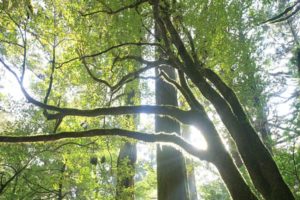
Yakushima is famous for its abundant rainfall, but the sun is also quite strong, especially in summer, so rain gear, hats, and sunscreen are a must.
Climbing Mt. Miyanoura and Mt. Kuromi is hot due to direct sunlight, and the strong tropical sun increases the risk of heat stroke and dehydration.
It is very important to hydrate frequently, especially during the summer months.
summary
What do you think about the charms of Yakushima?
Yakushima Island, registered as a World Heritage Site, is the pride of Japan and an island of rich nature that attracts many people.
Please visit Yakushima Island to feel the breath of life and be healed in body and soul.
Thank you for taking the time to read this to the end.

